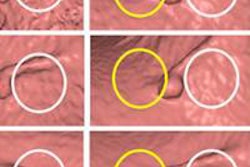
VIENNA - CT colonography (CTC) has much to recommend it: short exam times, high patient acceptance, no need for sedation, and overall excellent visualization of colonic pathology. So after seven years of trial and error, CTC (also known as virtual colonoscopy) is ready for large-scale population screening, right?
It's virtually ready, according to Dr. Riccardo Iannaccone from the University of Rome La Sapienza in Italy.
"The question is, what does CT colonography need before it can be introduced in screening programs?" Iannaccone said at today's ECR 2002 colonography sessions. "What is missing? The answer is twofold: First we need a reduction of cost, and then we need a reduction of dose exposure."
The colonoscopy alternative is cheap, and diagnostic for most patients. It’s so good, in fact, that a recent study concluded that CT colonography's cost must drop by 54% to compare to that of conventional colonoscopy, Iannaccone said. Nevertheless, costs are expected to fall on their own as efficiencies improve with coming technical advances.
"For us, the main issue is dose exposure," Iannaccone said. Fortunately, his group also had a solution, in the form of a low-dose multislice CT protocol that offered specificity and sensitivity comparable to that of both conventional colonoscopy and standard-dose CT.
He cited three main reasons why standard CT doses are high. First, double positioning -- prone plus supine -- has been found to detect the highest number of lesions. Second, MSCT scanners deliver higher radiation doses than single-slice machines when the same imaging parameters are applied. Third, only minimal attention has been paid to optimizing low-dose protocols, Iannaccone said, citing a single paper his group found on the subject, by Hara et al (American Journal of Roentgenology, May 1997, Vol. 168:5, pp. 1181-4).
"The purpose of our study was to evaluate the feasibility of ultra-low-dose CT colonography," he said. "We examined 27 patients with suspected colorectal lesions, and we made a blinded comparison with conventional colonoscopy."
Twenty-seven patients (14 males, 13 females) with clinical indications for conventional colonoscopy underwent multislice spiral CT imaging on a Somatom Plus 4 Volume Zoom scanner (Siemens Medical Solutions, Erlangen Germany). The imaging followed conventional colonoscopy (using CO2) the same day, as well as bowel cleansing and insufflation with room air to the limit of patient tolerance, Iannaccone said.
Images were acquired using 2.5-mm slice collimation, 3-mm slice thickness, 1-mm reconstruction interval, 17.5-mm/s table speed, 140 kVp, and 10 mAs. (Image filtering was not used to reduce image noise, but 120 kVp had proved insufficient and was raised to 140 kVp for the study, he said.)
Image analysis was performed by two experienced radiologists, working independently, who based their results on a consensus of images. The observers read 2-D axial multiplanar reformations, as well as 3-D endoluminal views.
The images were reviewed on a dedicated workstation using Vitrea 2.2 software with volume-rendering capabilities (Vital Images, Minneapolis). Two independent readers, blinded to colonoscopy results, reviewed the images. Each of them had previously evaluated more than 200 CTC images. The readers rated image quality on a scale of 1-4, from nondiagnostic to excellent.
"The two observers had experience in more than 200 (CTC) cases, and knew exactly what excellent was meant to be in this study," Iannaccone said.
The readers rated the mean image quality at 3.1 for the colon, and 1.8 for extracolonic structures such as the liver and lymph nodes.
According to the results, all colorectal cancers (9/9) were correctly identified by CT colonography, for a sensitivity of 100%. CTC detected 12 of 14 polyps discovered on conventional colonoscopy, for a polyp sensitivity of 85.7%.
The false-negative polyps missed by CTC were smaller than 5 mm, and CTDI dose exposure did not exceed 1.37 mGy for each scan. The mean CTDI dose exposure was 1.7 mSv for males and 2.3 mSv for the female patients. The numbers compared very favorably to two previous MDCT studies, which yielded mean CTDI doses of 4.8/ 7.0 mSv (m/f) and 5.0/7.8 mSv (m/f), respectively.
"Ultra-low-dose CT colonography provided a substantial radiation dose reduction (of) 40% to 70%," Iannaccone said. "It allows colonic assessment with sensitivity that is comparable with protocols that produce higher radiation doses, although our data is certainly subject to confirmation from larger series. The problem is, we have poor image quality for extracolonic assessment, but do we really need extracolonic findings from screening colonography to be used for screening purposes?"
Session moderator Dr. D. J. Lomas from Cambridge, U.K. asked Iannaccone what he thought the optimal screening dose might be.
"It is difficult to say, but I think the crucial point is that in a screening setting it is important to deliver the lowest radiation dose with acceptable image quality to detect the highest number of lesions," Iannaccone said.
In a later presentation, a study by Dr. Alice Gillams and colleagues from University College London in the U.K. found less success with another dose-reduction technique. Using 5-mm slice thicknesses produced a sensitivity of only 28% for polyps 5 mm and smaller, she said.
By Eric BarnesAuntMinnie.com staff writer
March 3, 2002
Copyright © 2002 AuntMinnie.com




















